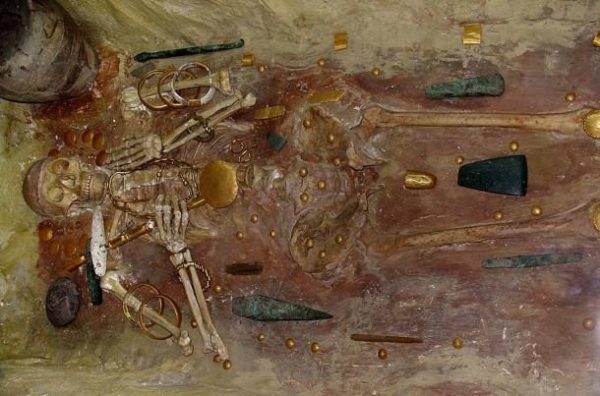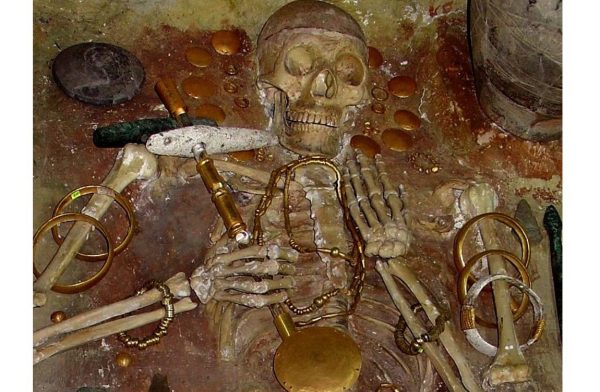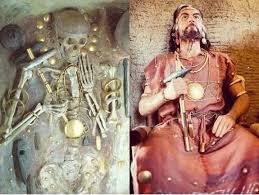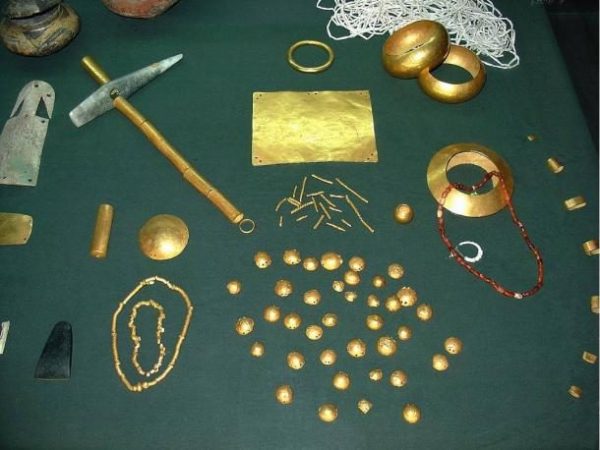In the 1970s, Bulgarian archaeologists made a significant discovery in the form of a large Bronze Age necropolis near the modern-day city of Varna.

The cemetery dates back to the 5th millennium BC and is filled with more than 300 graves and over 22,000 artifacts, including more than 3,000 gold items with a total weight of 6 kg. This discovery became one of the most important archaeological finds in Bulgaria.
The tombs found in the necropolis belonged to the Varna civilization, an ancient culture that emerged on the shores of the Black Sea lake about 7,000 years ago.

The Varna civilization predates the empires of Mesopotamia and Egypt and is considered one of the oldest known cultures to produce gold artifacts.
Among the elite graves in the necropolis, a particular tomb, numbered 43, stood out. This tomb contained the remains of a man believed to be a ruler or leader of high status. The individual was buried with a scepter, symbolizing high power, and notably, a solid gold sheath covering his penis.

The gold-covered penis sheath is considered a unique and intriguing feature, emphasizing the high status of the individual in life. However, the true identity of this rich man remains unknown, as researchers have not discovered specific details about him.
The Varna civilization thrived as a prosperous commercial center, engaging in trade with neighboring regions and developing advanced metallurgical skills.

The decline of the Varna civilization is theorized to be the result of climate change and attacks by cavalry from the steppe at the end of the 5th millennium BC. Despite leaving no direct descendants, the Varna civilization left a lasting legacy and set the stage for subsequent civilizations in Europe.





